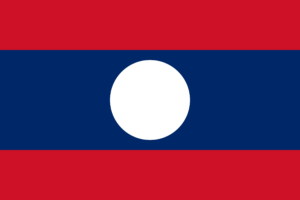History of Laos:
When the Kingdom of Lan Xang came to power in 1353, the nation of Laos initially started to take shape. Million elephants is the meaning of the name Lan Xang. The monarch was King Fa Ngum, and both Thailand and a large portion of Laos fell under his kingdom. Buddhism overtook other religions at this period.
The Lan Xang had fallen in the late 18th century, and the Siamese had taken over Laos. The French then came in the 1800s. The frontiers of present-day Laos were established by the Franco-Siamese Treaty in 1907.
During World War II, the Japanese took control of Laos. Laos declared its independence from France in 1945, following the conclusion of the war. But soon after, French troops returned and seized power.
Laos gained independence from France in 1954. However, internal conflict erupted. Laos was governed by an oppressive communist party after many years of conflict and involvement from both the US and the USSR. Over the years, a large number of individuals, especially the Hmong minority, have left Laos.
Information about Laos:
| Capital | Vientiane |
| Population | 7,653,662 (Source: 2023 worldometer) |
| Major Cities | Luang Prabang, Vientiane, Vang Vieng, Pakxe, Phonsavan, Champasak, Savannakhet, Thakhek, Paksan |
| Borders | North by China, to the northeast and east by Vietnam, to the south by Cambodia, to the west by Thailand, and to the northwest by Myanmar (Burma) |
| Gross Domestic Product (GDP) | $5,724,383,783 (2022 worldometer) |
| Currency | kip (LAK) |
Flag of Laos:
Laos Economy Key Industries:
Laos Major Industries: copper, tin, and gypsum mining; timber, electric power, agricultural processing, construction, garments, tourism, cement
Laos Agricultural Products: sweet potatoes, vegetables, corn, coffee, sugarcane, tobacco, cotton, tea, peanuts, rice; water buffalo, pigs, cattle, poultry
Laos Natural Resources: timber, hydropower, gypsum, tin, gold, gemstones
Laos Major Exports: garments, wood products, coffee, electricity, tin
Laos Major Imports: machinery and equipment, vehicles, fuel, consumer goods
The Geography of Laos:
Total Size of Laos: 236,800 km2 (source: wikipedia)
Geographical Low Point of Laos: Mekong River 70 m
Geographical High Point of Laos: Phou Bia 2,817 m
Climate of Laos: Tropical monsoon; rainy season (May to November); dry season (December to April)
General Terrain of Laos: mostly rugged mountains; some plains and plateaus
World Region or Continent of Laos: Southeast Asia
Geographical Coordinates: 18 00 N, 105 00 E
The People of Laos & Culture
Laos Government Type: Communist state
Laos Nationality: Lao(s) or Laotian(s)
Laos National Holiday: Republic Day, 2 December (1975)
Laos Independence: 19 July 1949 (from France)
Laos National Symbol: elephant
Laos National Anthem or Song: Pheng Xat Lao (Hymn of the Lao People)
Laos Languages Spoken: Lao (official), French, English, and various ethnic languages
Laos Religions: Buddhist 60%, animist and other 40% (including various Christian denominations 1.5%)
Interesting Facts about Laos:
Landlocked Laos, also referred to as the Lao People’s Democratic Republic, is a nation in Southeast Asia.
The capital and largest city of Laos is Vientiane.
Laos is referred to as the “Land of a Million Elephants” because of its historical connection to elephants and the quantity of elephant-related symbols in the country.
The Mekong River, one of Southeast Asia’s longest rivers, originates here and travels 1,900 kilometers (1,180 miles) through Laos.
Laos is well-known for its breathtaking natural scenery, which includes luxuriant mountains, gushing waterfalls, and serene rice fields.
Thousands of ancient stone jars are dispersed over the Laos region’s Plain of Jars, which is a UNESCO World Heritage Site.
The rich cultural history of Laos has been greatly impacted by Buddhism. Numerous Buddhist temples may be found throughout the nation, including Vientiane’s well-known Pha That Luang.
Laotians are mostly Theravada Buddhists, and their daily lives are heavily influenced by Buddhist customs and ceremonies.
Laos, one of the few remaining communist nations in the world, is governed by the Lao People’s Revolutionary Party.
The official tongue of Laos, Lao, shares linguistic ties with other Tai-Kadai languages and Thai.
Over 100 different ethnic groups, including the Lao Loum, Lao Theung, and Lao Soung, make up the rich ethnic composition of Laos.
The country, sometimes known as “Lao PDR” (Please Don’t Rush), has a laid-back and peaceful environment.
Laos is well known for its traditional handicrafts, which include woodcarvings, textiles, and silverware. Shoppers frequently visit the night markets in Luang Prabang and Vientiane to find regional crafts.
China to the north, Vietnam to the east, Cambodia to the southeast, Thailand to the west, and Myanmar (Burma) to the northwest are all landlocked neighbors to Laos.
The Bolaven Plateau in southern Laos is renowned for producing high-quality coffee beans and is home to numerous coffee plantations.
The climate in Laos is tropical monsoon, with distinct wet and dry seasons. Typically, the wet season lasts from May until October.
Laos is home to a wide variety of wildlife, including critically endangered species like the Asian elephant, Indochinese tiger, and Irrawaddy dolphin.
Sticky rice, larb (a minced beef salad), and tam mak hoong (a spicy green papaya salad) are just a few of the unique foods that make Lao cuisine stand out.
The Kuang Si Falls are renowned for its azure blue waterfalls and are a well-liked tourist destination close to Luang Prabang.
Laos is a well-liked ecotourism location, providing chances for trekking, river cruises, and discovering secluded hill tribe villages.
Southeast Asian landlocked nation Laos is situated. China, Myanmar, Vietnam, Cambodia, and Thailand are its neighbors.


